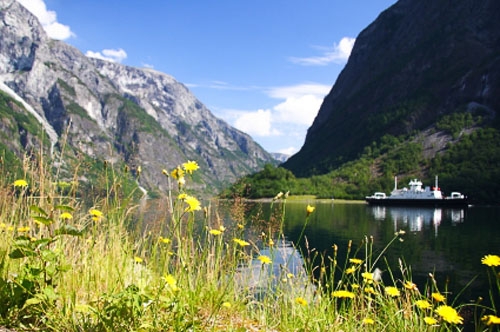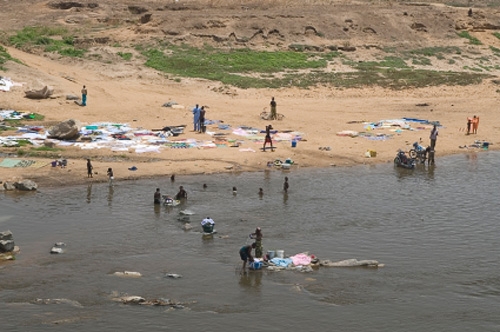Norway and Niger: The Great Divide
Though Norway and Niger are close alphabetically, they are worlds apart. According to the UN Development Program, Norway has the highest standard of living while Niger, on the other hand, has the worst. We put the spotlight on these two countries and examines whether the great divide is simply due to geography and resources.
Imagine a young professional who doesn’t have any fear of not being able to pay his bills, or when the next paycheck is coming. His government assures him of a universal healthcare and all social security benefits. He is also able to secure his higher education for free. That’s Norway in a nutshell. Living in the second richest country in Europe, Norwegians enjoy the ease of a highly functioning social system. Their government, in fact, also funnels a good chunk of the country’s enormous oil wealth into efforts for reversing global warming and into foreign aid budget that can put world powers to shame.
Now, imagine then a place on the other side of the spectrum, where four-year old Aminu Yahaya lies prone on a shabby hospital bed: thin to the bones, skin peeling off, and very weak from hunger. In a way, he’s not that much different from most of those living in Niger, a country where poverty, drought, plagues of locusts, and corruption have doomed its people to a life spent scrapping for food and brushing off the flies feasting on their skin. Today, one can visit him in an unmarked grave somewhere in Maradi City, beside scores of freshly dug mounds, each a painful reminder of another life pointlessly lost.

Bergen, Norway
Thus are the fates of Norway and Niger: two countries bound only in an alphabetical sense, but are as different from each other as night and day can ever be. The UN Development Programme (UNDP) ranks Norway as the best place to live right after Australia and Iceland, while Niger finds itself at the bottom. Called the Human Development Index, this list highlights the astonishing gap between the rich and poor countries, using such criteria as gross domestic product (GDP) per capita, literacy, life expectancy, and education.
The situation ultimately begs the simple, but burning question: Why? We look into some factors that may have been responsible for turning one nation incredibly wealthy, while leaving another knee-deep in abject poverty.
Is it all about resources?
Norway’s rise to riches is actually pretty recent, having been in fact one of the poorest countries in Europe a mere 40 years ago. That is, until the Norwegians struck oil in the 1960s. The discovery brought and agrarian society to an esteemed status internationally. Today, it rubs elbows with the wealthiest of nations. Apart from oil, Norway is the world’s second largest exporter of fish, behind only China, and that the Norwegian krone is one of the most powerful currencies around.

Ship on Fjord
What separates it from being a one-day millionaire is its underlying survival mentality that was forged out of centuries of foreign occupation and hardship. Typical Norwegian, most locals own large freezers of stowed food, for use during emergencies and droughts. The same translates into its economy, wherein a big chunk of the country’s revenues are saved in a government pension fund (valued today at $350 billion) – acknowledging the fact that their oil and natural gas reserves are finite. And it has paid off. Norway is one of the few to have emerged relatively unscathed from the world economic crisis of 2008, and in fact even had a seven percent budget surplus.
In stark contrast is Niger, which has one of the poorest economies in the world. For a country relying a lot on agriculture, only 15 percent of its land is considered arable – it even has to export grains to feed its people. It has also been frequently devastated by prolonged famines, as well as by hordes of locusts that destroy the crops.
During the 1960s and 70s, Niger’s economy got a huge boost from an increase in worldwide demand for uranium, of which it has large amount of mineral deposits. Unfortunately, this boon very soon came to an abrupt end in the 1980s, causing the country’s development to stall and become stagnant. Thus, its government relies heavily on foreign aid and funding from the World Bank and the International Monetary Fund (IMF). Not surprisingly, it is waddling deep in debt – a disheartening 60 percent of Nigeriens survive on less than $1 a day.
Or perhaps location?
Norway’s geographic location has certainly helped it become the wealthy nation it is today: its extremely elongated shape gives it one of the longest coastlines in the world. It is known for having the unique fjords (narrow inlets with steep sides formed by glacial activity) that are home to some of the largest coral reefs around, making it suitable for fishing. And of course, it lies south of the oil-rich North Sea, from whence it owes much of its wealth. Its proximity to affluent European countries is also a plus, making trade quick and efficient.
Niger, on the other hand, is the largest nation in West Africa. Its size is almost meaningless though - offset by having more than 80 percent of its territory in the barren Sahara Desert. The situation is further worsened by the fact that it is plagued by recurring droughts, as well as being far from any substantial source of water. Indeed, the country has remained handicapped by its landlocked location, with most of its population crammed in the few fertile lands of the south. Not that they Nigeriens have anywhere to go, as neighboring nations are also unable to help, themselves mired in problems.

African way of washing
The stark contrast between these two nations is a lasting reminder that we live in a world where the rich get richer and the poor get poorer. Whereas the Norwegian government takes great pains to ensure the well-being of its constituents, as well as the preservation of its wealth, the same can’t be said entirely for Niger. Its government reeks of corruption, with much of the national treasury squirreled away by crooked politicians.
Maybe it is time to help Niger cure its sickness, and not just alleviate the symptoms. Foreign aid should not only be utilized for food, but also to prop up the country’s industries and economy. But even amidst their suffering, Nigeriens can still be seen with a laugh and a smile – a sign of their sturdy belief that good things are still bound to come.

The latest features
Summer Destination to Avoid: Gulf of Mexico
 EPA is failing to do their job monitoring the air and reporting factual data. The people need to be made aware that their lives and long term livelihood are at stake because of the air quality in Gulf of Mexico.
EPA is failing to do their job monitoring the air and reporting factual data. The people need to be made aware that their lives and long term livelihood are at stake because of the air quality in Gulf of Mexico.
How to Avoid Traveling Troubles
 Traveling to a certain destination might not become memorable if there are too many troubles along the way. Remember that even the best trips are usually not trouble-free. Follow these tips that help lessen the hassles.
Traveling to a certain destination might not become memorable if there are too many troubles along the way. Remember that even the best trips are usually not trouble-free. Follow these tips that help lessen the hassles.
Unique Toys from Japan
 Japan is known for its fascinating, and sometimes, eccentric culture. From anime, karaoke, to advanced technology, the Land of the Rising Sun always has something unique to offer.
Japan is known for its fascinating, and sometimes, eccentric culture. From anime, karaoke, to advanced technology, the Land of the Rising Sun always has something unique to offer.
Exploring California's Venice Beach
 Travelers who are after the sunny side of Southern California can visit the beautifully eccentric Venice Beach, also known as Arnold Schwarzenegger’s Muscle Beach, home to Hollywood royalties Julia Roberts, Kate Beckinsale, and Nicolas Cage.
Travelers who are after the sunny side of Southern California can visit the beautifully eccentric Venice Beach, also known as Arnold Schwarzenegger’s Muscle Beach, home to Hollywood royalties Julia Roberts, Kate Beckinsale, and Nicolas Cage.
When Mother Nature wields terror
 Some places are made dangerous by the conflicts brought about by humans. But in these towns and cities—most of them heavily populated—it is Mother Nature which is always on the verge of wrath, wrecking havoc of unimaginable proportions.
Some places are made dangerous by the conflicts brought about by humans. But in these towns and cities—most of them heavily populated—it is Mother Nature which is always on the verge of wrath, wrecking havoc of unimaginable proportions.
Slaughter of dolphins comes to cinemas
 Ric O’Barry once captured and trained dolphins in amusement parks and made the character Flipper world famous. Now, he is the animals’ unlikely champion, exposing the savage ways they are hunted in a small town in Japan. This time, he wants the dolphins swim free.
Ric O’Barry once captured and trained dolphins in amusement parks and made the character Flipper world famous. Now, he is the animals’ unlikely champion, exposing the savage ways they are hunted in a small town in Japan. This time, he wants the dolphins swim free.
The new Bollywood fever
 As one of the major film production centers in the world, Bollywood churns out about 1,0000 movies, most of which cater to India’s masses. They precariously enact their lives through the characters, escaping to a world where everything in the end gets resolved in song and dance.
As one of the major film production centers in the world, Bollywood churns out about 1,0000 movies, most of which cater to India’s masses. They precariously enact their lives through the characters, escaping to a world where everything in the end gets resolved in song and dance.
Finding Haiti Amid the Rubbles
 Weeks after the earthquake that rocked Haiti, rescuers are still finding survivors amid the rubbles. It seems that the hardy spirit of Haitians is still alive, inherited from their ancestors who led the only successful slave revolt in history.
Weeks after the earthquake that rocked Haiti, rescuers are still finding survivors amid the rubbles. It seems that the hardy spirit of Haitians is still alive, inherited from their ancestors who led the only successful slave revolt in history.


